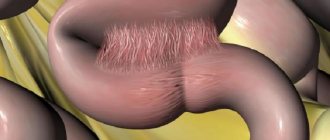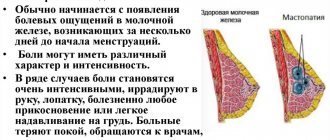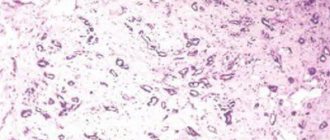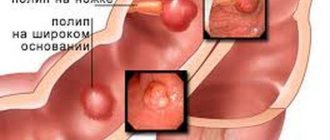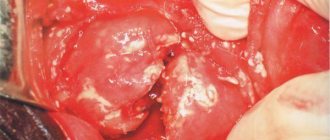Infiltrative breast cancer is a common oncological disease. It is diagnosed in approximately 80% of women with malignant breast tumors. The older the patient, the higher the likelihood of developing carcinoma.
The disease is characterized by its aggressiveness. The neoplasm quickly spreads beyond the boundaries of the mammary duct. It even covers the surrounding muscle tissue. Metastases are often found in the liver, bones, lymph nodes, kidneys, and respiratory organs. In addition, malignant cells can penetrate into the brain through the bloodstream.
Features of the disease
In ICD-10, breast cancer is coded C50 and is a common tumor in women. It is worth noting that every year the number of patients suffering from this disease is increasing. The disease can be detected at any age. However, it is more often observed in older women. The older you are, the higher your risk of getting sick.
Breast cancer (ICD-10 code C50) has an extremely aggressive course. Cancer cells penetrate through the bloodstream into the lymph nodes, as well as joints and nearby organs. A characteristic feature of the pathology is the persistence of malignant cells in the patient’s body for a long time. They can cause relapse even 5-10 years after the end of treatment.
Possible complications
Infiltrative breast cancer is an aggressive and dangerous cancer, which is often complicated by other pathological manifestations:
- Active metastasis of a malignant tumor to the lymph nodes and nearby internal organs. Often oncology affects the lungs, bones, kidneys, brain, liver, appendages, and adrenal glands.
- Impaired motor activity of the upper limb on the side of the “sick” chest.
- Development of lymphostasis of the upper limb.
- Recurrence of cancer 5-10 years after therapy (chemotherapy or surgery).
Delaying treatment for infiltrative breast cancer is fraught with other complications. The malignant process can spread not only to nearby organs, but also to other tissues.
The longer cancer treatment is delayed, the higher the likelihood of complications or death.
Damage to the lymph nodes leads to swelling of the limbs
Infiltrative forms of breast cancer differ in their characteristics. Some are prone to relapses and metastases, so a complication may be the appearance of metastases or their latent existence until a certain point, after which secondary tumors form. They can affect both bone tissue and soft tissue of internal organs, as well as parts of the central nervous system.
With breast cancer, lymph stagnation often occurs due to damage to blood vessels and nodes. As a result, the motor activity of the shoulder or arm as a whole decreases.
Complications most often appear in the case of late detection of a tumor or with reduced immunity, which occurs in old age or in the presence of concomitant diseases.
Main types
Another name for this pathology is carcinoma. What it is? This is a type of malignant neoplasm that develops from epithelial cells. What are its types? Doctors identify several different types of breast cancer, namely:
- Ductal.
- Lobular.
- Non-specific.
- Edema-infiltrative.
Ductal breast cancer usually affects older women. The oncological process begins to occur in the milk ducts, then gradually grows and penetrates the adipose tissue. Metastases penetrate into nearby lymph nodes. This type of disease occurs most often.
The malignant neoplasm is a rather dense node that has an oval shape and uneven outline. It is connected to adjacent tissues. The diameter of the neoplasm can be very small, but it can grow to large sizes. There are necrotic areas inside the tumor that provoke the formation of a cyst.
For a long time, the pathology does not manifest itself at all, even during palpation. As the disease progresses, the tumor begins to affect the areola or nipple. A characteristic discharge appears from the chest.
Lobular infiltrative breast cancer appears very rarely. It usually occurs in older women. Often, bilateral breast lesions are recorded.
This neoplasm is formed from the tissues of the milk lobules. It is quite difficult to detect in the initial stages. The tumor does not cause pain, has a dense consistency and uneven outline. At later stages, wrinkling and retraction of the skin are noted, as well as the spread of metastases to the ovaries and uterus.
A nonspecific type of disease includes neoplasms that do not have specific symptoms or cause certain difficulties in making a diagnosis. Tumors of this type are quite rare. The prognosis of the disease depends on many different factors.
The edematous-infiltrative form of the neoplasm is found in approximately 5% of women. An infiltrate forms in the mammary gland, which is accompanied by severe swelling of the tissue. The disease is quite difficult to diagnose, since the neoplasm cannot be felt, so many people confuse cancer with inflammation in the gland.
Forms of the disease, symptoms
An inverted nipple is a typical symptom in early breast carcinoma.
Infiltrative cancer has several types:
- Carcinoma is infiltrative ductal cancer. It begins with the growth of the internal epithelium of the milk ducts, then grows into it and is transferred to surrounding tissues, subcutaneous fat, lymph nodes and blood vessels.
- Lobular infiltrative cancer. Malignant cells are located in the form of chains around the lobules, sometimes leaving the ducts and alveoli intact.
- Edema cancer. It is often mistaken for mastitis or inflammatory skin diseases, so a biopsy is necessary for an accurate diagnosis.
- Infiltrative breast cancer of a nonspecific type, which is rarely diagnosed. This includes colloid (mucosal) cancer and squamous metaplasia.
Treatment is carried out after diagnosis and histological differentiation of cells, their severity, as well as the presence or absence of metastases. The patient’s age, her hormonal status, and the state of the immune system are taken into account.
Ductal carcinoma
Ductal carcinoma
Infiltrating ductal breast cancer grades 1 and 2 may not show signs of malignancy. There is a lump or inflamed area of skin in the chest with increased body temperature. The shape of the nipple changes, erosions appear on the skin, and liquid flows out of the hole - first transparent, then mixed with blood.
A feature of ductal carcinoma is its uneven, star-shaped edges. This suggests that the malignant process has spread to the surrounding tissue.
If during diagnosis it is discovered that nearby lymph nodes are affected, distant parts of the body are examined - bones, lungs and liver, since malignant carcinoma cells could penetrate there and form secondary foci of cancer.
A type of ductal carcinoma is tubular carcinoma. This species is weakly active, grows slowly and responds well to treatment. The prognosis of the disease is favorable, since tubular carcinoma rarely metastasizes.
Another type is a medullary tumor, which is extremely rarely diagnosed in women. It is characterized by slow growth, although upon histological examination the cells are more similar in structure to aggressive forms of cancer.
In 1% of cases, a papillary tumor is detected - this is also a non-aggressive form that almost never spreads to the lymph nodes. It is well treated, especially in the early stages, and does not cause relapses. It has a round shape with smooth edges.
Cibriform carcinoma has a specific structure - it is riddled with holes, so it is somewhat similar to cheese. The malignant process affects the connective tissue of the lobules and ducts.
Lobular carcinoma
Lobular carcinoma
According to statistics, it occurs in 10% of cancer cases and affects both breasts at the same time. A poor prognosis is most often explained by late detection of the tumor, since it rarely forms a lump and does not hurt for a long time. Symptoms appear when the process moves to the areola and nipple:
- discharge appears;
- the nipple changes shape - moves or retracts inward;
- the area of skin above the tumor turns red.
The skin becomes like a lemon peel - it thickens, the pores become larger.
Edema-infiltrative form
Occurs in 5% of cases. It is rarely possible to detect a tumor on your own, since a compaction with clear edges does not form. The disease resembles an inflammatory process. Edematous diffuse tumor is rare. Its symptoms are redness of the skin and increased temperature in the chest. The volume of the mammary gland increases due to tissue swelling.
The nodular form is the most dangerous, as it quickly passes into stage 4 and gives metastases. During diagnosis, a dense solitary (single) formation is visible.
Nonspecific types of carcinoma
They are difficult to diagnose tumors, the cells of which are highly mutated, and it is impossible to determine their histological identity. There are degrees of differentiation: G2, G3 and G4. The prognosis for G2 is more favorable, since the cells are partially identified and treatment can be tailored to them. A G3 tumor is considered poorly differentiated with an aggressive course.
Colloid or mucinous carcinoma is a rare form of ductal carcinoma. The examination reveals malignant cells floating in a viscous liquid. The process rarely spreads to the lymph nodes and the tumor responds well to treatment.
Nonspecific forms include leaf-shaped tumors, which are a continuation of fibroadenoma that has malignized into cancer. After a benign process, a borderline stage occurs, then a malignant one. After surgical removal of the mammary gland, after a short time, the tumor can appear in the other breast. It may remain small in size for a long time and not grow. Under favorable conditions, the process of rapid proliferation—cell division—starts.
Nonspecific forms of cancer include ductal and lobular types, such as squamous metaplasia, Paget's cancer, tubular (tubular) carcinoma. In terms of the degree of aggressiveness and tendency to metastasize, these forms differ greatly from each other, so the prognosis in each specific case will be different.
Stages of progression and degree of malignancy
Infiltrative breast cancer (like other types of oncology) has several stages. They are based on the following indicators:
- Size of the tumor.
- Presence of metastases.
- Damage to the lymph nodes.
- Invasiveness.
The early stages of breast cancer are characterized by practically asymptomatic progression and minimal tumor size. A neoplasm can be detected only through comprehensive diagnostics. Stage 0 is considered the very beginning of the disease. The tumor has a very minimal size and does not extend beyond the affected tissue. There are no metastases.
At stage 1 of the disease, the tumor measures no more than 20 mm. There is a slight growth of malignant cells deep into the tissues. At this stage there are no metastases.
At stage 2, the tumor can reach 50 mm in size. The tumor grows quite deeply. It may manifest itself as damage to the lymph nodes located in the armpits. The spread of metastases has not yet been detected.
During stage 3 breast cancer, the tumor can reach a size of more than 50 mm. The growths in the tissue are quite deep, and the presence of fused lymph nodes is also noted.
At stage 4, metastases penetrate into nearby tissues and organs, as well as bone tissue. In addition, metastases (cancer cells detached from the tumor) can be observed in any organ where they enter through the bloodstream. This may result in the formation of secondary cancer.
The course of the oncological process can be characterized by the degree of aggressiveness or malignancy. There are several groups:
- GX – changes are quite difficult to determine.
- G1 – slight germination of malignant cells.
- G2 – the tumor borders on critical indicators.
- G3 – the prognosis becomes unfavorable.
- G4 – tissues are maximally affected by the malignant process.
With the first two degrees of malignancy, the condition is characterized as quite good for successful therapy, because the degree of tumor germination is not too high. In this case, the prognosis is usually favorable if treatment is started on time.
Stages of breast cancer
Staging of malignant breast tumors is based on the generally accepted TNM classification. The letter T represents the size of the primary cancerous tumor and how deeply it has grown into surrounding tissue. Letter N - damage to regional lymph nodes. Letter M - metastases. Depending on these characteristics, the following stages are distinguished:
| This is not yet infiltrative cancer. The tumor is located where it originated (in the ducts or lobules of the mammary gland) and does not invade the surrounding tissue. | |
| I.A. | Small tumor. It does not spread to the lymph nodes, there are no metastases. |
| I.B. | The tumor in the chest is no more than 2 cm. There may be a lesion in the lymph nodes from 0.2 to 2 mm. |
| IIA | Cancerous foci were found in 1–3 lymph nodes. A tumor less than 2 cm that has spread to the lymph nodes in the armpit. A tumor measuring 2–5 cm that has not spread to the lymph nodes. |
| IIB | The tumor measures 2–5 cm and has affected 1–3 lymph nodes in the axillary region. The tumor is more than 5 cm and has not spread to the lymph nodes. |
| IIIA | Infiltrative tumor of any size, in which 4–9 axillary lymph nodes or intrathoracic lymph nodes are affected. A tumor larger than 5 cm that has affected 1–3 axillary lymph nodes. |
| IIIB | The tumor, which has grown into the chest wall or caused changes in the skin of the breast, has affected up to 9 lymph nodes. |
| IIIC | A tumor that has spread to more than 10 lymph nodes. |
| IV | Metastatic cancer. The size of the primary tumor and the involvement of the lymph nodes are not important. The key feature of this stage is the presence of distant metastases. |
The more infiltrative cancer has spread in the body, the more difficult it is to fight it. But we firmly believe that there are no hopeless patients. You can always help. In later stages, remission is often impossible. But it is possible to cope with painful symptoms, slow down the progression of cancer, and prolong the patient’s life. The European clinic has everything you need for this. We know how to help.
Chief Physician of the European Clinic Andrey Lvovich Pylev
Causes
Absolutely all women are interested in the causes of carcinoma. Doctors have known for a long time what it is. But there are still no exact answers to why this disease occurs. There are only assumptions. It has been found that breast cancer can occur for the following reasons:
- High degree of sensitivity to estrogen and progesterone.
- Presence of specific genes.
- Difficulties in regulating the inflammatory process.
Oncologists identify several factors that influence the formation of infiltrative breast cancer. These include:
- Genetic predisposition.
- Hormonal disorders in the body.
- Age.
- Presence of precancerous diseases.
It is known that women with close relatives who have had malignant breast tumors have a much higher risk of developing the disease. Those whose relatives have had cancer of any organ are also at risk. Also significantly increase the risk of various kinds of hormonal disorders. Cancer can be triggered by early menstruation, late menopause, lack of childbirth and pregnancy throughout life, late pregnancy, refusal to breastfeed the baby, and taking hormonal medications for a long time. Various endocrine diseases and excess weight affect the occurrence of cancer.
Causes
To date, the main provoking factors of cancer have not been established. In most cases, among the most common causes of lobular cancer, experts identify:
- hereditary predisposition;
- menopause after reaching 55 years of age;
- late birth;
- refusal to breastfeed ;
- early onset of menstruation in girls (up to 12 years);
- abortions;
- excessive consumption of alcoholic beverages;
- injury to the mammary glands;
- frequent stressful situations;
- pathologies of the endocrine system;
- excess weight ;
- an increase in the concentration of cholesterol in the blood fluid.
The main reason for the development of lobular carcinoma is the use of hormonal drugs over a long period of time. This also includes cases where medications were used for contraception.
Main symptoms
It is imperative to know what cancer looks like and what signs of the disease may be in order to detect the disease in a timely manner. A feature of the pathology is the absence of pronounced symptoms in the initial stages, which leads to late diagnosis and complex therapy. Only after the transition to stage 2 may the first signs appear.
Among the main symptoms of infiltrative breast cancer, it is necessary to highlight:
- Lumps in the chest.
- Change in breast shape, swelling and swelling.
- Inverted nipple, presence of discharge.
- Structural changes in the skin.
- Change in skin tone.
Regarding general well-being, women do not observe any special changes. This can last until the beginning of stage 4 of the oncological process, when tumors begin to develop in many organs. During this period, most women experience rapid weight loss, deterioration in health, high fatigue, and severe pain.
Knowing what cancer looks like, you can promptly consult a doctor for diagnosis and subsequent treatment. A feature of the disease is the formation of metastases. They can remain in a latent or hidden state for a long time.
Cancer metastasis leads to the formation of secondary tumors in any organs, not just nearby ones.
Symptoms
Lobular breast cancer has virtually no clinical symptoms, which makes it difficult to diagnose the disease during examination. This is explained by the same density of glandular tissue and tumor neoplasm. As a result, the tumor tends to grow to large sizes by the time it can be detected.
On this topic
- Oncomammology
Breast puncture
- Natalya Gennadievna Butsyk
- November 29, 2020
When the pathological process transitions to an invasive form, signs such as:
- compacted formations with unclear contours, having a certain mobility;
- nodules that form singly or in groups;
- an increase in the size of lymph nodes;
- changes in the shape, size and configuration of the mammary gland when contacting a specialist at later stages of the disease;
- hyperemia of the chest surface;
- pale skin;
- wrinkling .
If during the examination an indeterminate node was discovered, then you must immediately visit a medical institution, where an examination by a mammologist or oncologist will be carried out. Since such a symptom may indicate lobular carcinoma.
Carrying out diagnostics
To determine the correct treatment tactics, timely diagnosis of infiltrative breast cancer is very important. The formation of the disease can be determined by conducting the following studies:
- Visual inspection.
- Ultrasound diagnostics.
- Mammography.
- Biopsy.
- Tomography.
- Laboratory research.
When conducting a visual examination of the mammary glands, the doctor pays attention to their shape, size, symmetry, density, and mobility. In addition, it checks the condition of the supraclavicular and axillary lymph nodes.
Ultrasound will help determine the presence of a tumor, since during the study there is a deterioration in the passage of ultrasound in the area where the tumor is localized.
Mammography can detect tumors with a diameter of more than 0.5 cm and microcalcifications.
A biopsy is performed by taking a puncture or resection of the tumor, after which the resulting material is sent for histological examination. This allows you to determine the degree of malignancy of the tumor.
MRI is usually performed if recurrence is suspected, and also to assess the general condition of the tissues in the presence of an implant.
Laboratory tests can determine the presence of cancer markers and assess hormone levels in the body.
Diagnostics
To diagnose lobular carcinoma, in addition to examining the mammary glands by a specialist, additional examinations are prescribed.
Mammography
This method in itself is not effective, but it makes it possible to differentiate the pathology from other types of cancer.
Blood analysis
Laboratory diagnosis involves studying the tumor marker HER-2/neu in the blood fluid. Thanks to him, it is possible to establish existing deviations from normal values.
Biopsy
The technique consists of collecting biological material using a special syringe in the place where the tumor process is expected to be localized. After taking a sample, it is examined in a laboratory.
Ultrasound of the mammary glands
This diagnostic method makes it possible to determine the location of the malignant neoplasm.
Checking estrogen levels
Lobular carcinoma is a disease that is directly related to hormones. It is for this reason that there is a need for their differential diagnosis.
Radiography
Allows you to determine how far the metastases have spread.
Also, if necessary, magnetic resonance and computed tomography may be prescribed.
Invasive lobular cancer can often be diagnosed late, when the tumor is already quite large. This is associated not only with the characteristics of tumor growth, but also with the difficulties that arise when using mammography.
Features of therapy
Treatment methods for infiltrative breast cancer are selected individually. Therapy must be comprehensive. It includes:
- Carrying out the operation.
- Radiation therapy.
- Hormonal therapy.
- Chemotherapy (taking medications).
- Targeted therapy (used for patients whose tumor produces the HER 2 gene).
The main measure to combat a malignant tumor is surgery. The following types are usually used:
- Partial mastectomy. It is used if there are no metastases and the tumor is localized in a small area. Only the malignant tumor and adjacent healthy tissue are removed. After surgery, radiation therapy is required.
- Radical resection.
Partial mastectomy is characterized by the fact that during the operation the breast muscles are preserved, so it is possible to perform breast surgery in the future.
Radical surgery involves removing the breast along with fatty tissue, part of the muscles and nearby lymph nodes. If inoperable infiltrative breast cancer of a nonspecific type occurs, then palliative surgery may be prescribed, the main purpose of which is to alleviate the patient’s well-being and increase life expectancy.
Radiation therapy is used in combination with other treatment methods. Basically, it is used after surgery to prevent the possibility of relapse or is prescribed along with taking certain medications.
Chemotherapy is considered one of the most commonly used treatment methods. It is necessarily prescribed in the following situations:
- The patient's age is less than 35 years.
- There are metastases.
- The tumor is more than 2 cm.
- Malignancy of the neoplasm between stages 2 and 4.
- The neoplasm is hormone independent.
Hormone therapy is an integral part of the main treatment. Basically, estrogen competitors are prescribed, as well as drugs that reduce the production of these hormones. All types of treatment are carried out after a doctor’s prescription.
Classification
Depending on the area affected by the mammary gland, infiltrative cancer has five stages. The so-called zero stage is considered the very beginning of the pathology, when the tumor is less than 15 mm and there are no external signs of the disease. Cell proliferation may be discovered accidentally, for example, during an ultrasound examination of the mammary gland when other diseases are suspected.
The first stage of cancer is diagnosed when the tumor size is up to 25 mm. Growing deep into healthy tissues is noted, but metastasis has not yet occurred.
The second stage is determined when the size of cancerous formations is from 25 to 50 mm. The tumor grows quite strongly and begins to damage the lymph nodes located next to the armpits.
At the third stage, the tumor becomes more than 5 cm. Fusion with the lymph nodes is observed, and initial metastasis occurs.
With pronounced spread of cancer beyond the borders of the mammary gland, the final, fourth stage is already determined. Advanced infiltrative breast cancer is characterized by metastases in the lungs, liver and bones.
Edema type
The edematous infiltrative form is characterized by the formation of severe edema around the tumor. This causes the sore breast to become enlarged and asymmetrical. This form is dangerous because already from the second stage, blockage of the mammary gland vessels with cancer emboli can begin. This accelerates the process of metastasis and leads to secondary pathologies of the circulatory system (thrombosis accompanying cancer, necrosis of healthy tissue due to malnutrition, etc.).
In the first stages, the edematous form of infiltrative cancer manifests itself in the form of redness of the skin with slight pain. Often, based on such signs, dermatological diseases are suspected and incorrect treatment is started. At the last stage, the redness turns into cyanosis, the swelling becomes very large (the diseased gland visually begins to appear 2-3 times larger). The surface of the chest becomes uneven (like a lemon peel), and when touched, a local increase in temperature is felt.
Lobular
The prevalence of the lobular form is less than 9% of all cases of infiltrative cancer. It is mainly diagnosed in nulliparous women over 50 years of age. A characteristic feature of the pathology is that both breasts are affected. Initially, cancer begins in the upper lateral quadrant of the sternum and quickly spreads throughout the entire area of the mammary glands.
Lobular breast cancer is very painful. The woman suffers from constant pain of various types - aching and shooting at rest, sharp upon palpation. When palpated, it is easy to detect dense tumors with jagged edges. Metastasis to the uterus and ovaries is typical. In a third of cases, this type of disease occurs against the background of hormonal imbalance due to age-related changes, endocrinological diseases, uncontrolled use of hormonal drugs, etc.
Ductal
This is the most common type of infiltrative breast lesion (diagnosed in 72% of cases). Ductal cancer forms in the epithelium of the milk ducts, and then “grows” deeper, affecting healthy tissue (they die, forming cysts). The tumor has the shape of an ellipsoidal node with jagged, uneven borders.
The peculiarity of ductal infiltrate is that it develops asymptomatically for a long time. As a rule, this form of breast cancer is diagnosed already at the 2nd or 3rd stage, when the tumor affects the nipples - they begin to change, retract or become very wrinkled.
Non-specific
This is the name for malignant neoplasms of the breast, the type of which cannot be determined by histological examination. Treating cancer of a nonspecific type is difficult, since you have to select methods “at random”, focusing on those that cause progress.
Nonspecific breast cancer comes in several types. The classification is based on the degree of development of the neoplasm and the speed of its spread:
- G1 – moderately differentiated malignant tumor with a slow progression.
- G2 is a moderately differentiated developing tumor with blurred boundaries.
- G3 is a low-grade malignant tumor with an aggressive course and invasion into adjacent tissues.
- G4 is a low-grade malignant tumor with the most aggressive course of the disease.
Non-specific forms G1 and G2 are difficult to diagnose in the early stages, but if they can be detected, the prognosis for treatment is generally satisfactory. Poorly differentiated Forms G3 and G4 respond poorly to chemotherapy and radiation therapy, are difficult to treat and have a poor prognosis.
Depending on the localization of the tumor process, the histological structure of the neoplasm and the degree of differentiation, infiltrating cancer can have many types.
The most common varieties:
- edematous-infiltrative;
- ductal;
- lobular;
- nonspecific.
Each type of breast cancer has its own signs and characteristics.
Approximately five percent of women with cancer experience the edematous infiltrative form of breast cancer. This type of oncopathology is difficult to diagnose, since the tumor in the breast is not palpable. Often the infiltrative-edematous form is mistaken by doctors and women themselves for simple inflammation.
This type of oncopathology is classified into two types:
- Primary or diffuse tumor is more rare. It is accompanied by swelling of the gland, hyperthermia of the skin, and redness similar to a flame. The skin at the site of the tumor becomes lemon peel-like and hot. The neoplasm, as such, is not detected either by palpation or on mammography, but there is some compaction.
- The secondary tumor is called nodular. During this type of oncological pathology, you can palpate and see the contours of the tumor on mammography. Nodular cancer quickly metastasizes and enters the fourth stage.
The second variant of the disease is more unfavorable and by the time of diagnosis the oncological process often occupies the entire breast.
Ductal
Elderly women are more likely to experience infiltrating ductal breast cancer. At first, the oncological process begins its development in the ducts of the breast, but gradually moves to adipose tissue. Oncopathology quickly metastasizes to regional lymph nodes. Infiltrative ductal carcinoma occurs in eighty percent of all breast cancers. The neoplasm has the form of a dense oval-shaped node with uneven outlines.
The tumor is fused to the surrounding tissues and can range in size from half a centimeter to ten centimeters. When the node is cut, areas of necrosis are visible, in which cysts and microcalcifications often form.
For a long time, this type of cancer is asymptomatic, and the tumor itself cannot be felt. Next, the nipple and areola begin to become involved in the process, and symptoms such as breast deformation and nipple discharge occur. In some cases, the skin on the chest becomes like lemon peel. Tissue differentiation in ductal cancer can be anything, so prognostic data for patients is also different.
Lobular
Ten percent of women with breast cancer experience infiltrating lobular breast cancer. Older women are more likely to get sick, and the pathology can affect two breasts at once. The neoplasm is localized mainly at the top near the armpit and in the initial stages is very difficult to diagnose.
For a long time, the affected area does not hurt and does not cause discomfort. Later, the skin wrinkles and retracts, metastases affect the ovaries and uterus.
Non-specific
Infiltrative breast cancer of a nonspecific type includes tumors without a specific morphological structure. Such neoplasms are difficult to differentiate.
This type of breast cancer includes:
- papillary cancer;
- tubular cancer;
- apocrine nondenocystic cancer.
This type of carcinoma is diagnosed extremely rarely and may have a different prognosis during treatment.
Traditional methods
Treatment methods are selected separately in each case. This takes into account the size of the formation, the severity of the course, the general well-being of the patient, metastasis, and the presence of concomitant pathologies.
If it is impossible to perform surgical intervention, as well as during the rehabilitation period, radiation therapy is indicated to prevent relapses. Sometimes radiation for breast cancer is carried out before surgery, as this allows the lesions to be localized. Contraindications:
- Decompensation of heart failure.
- Complicated liver diseases.
- Brain circulatory disorders.
- Severe metabolic disorders.
There may be certain negative consequences after radiation: changes in the skin, severe fatigue, pain in the chest, osteoporosis, nerve damage.
Chemotherapy for breast cancer also causes a number of negative consequences. However, chemotherapy drugs used before surgery stop the growth of cancer cells. Potent drugs improve prognosis and block the development of malignant tumors.
Consequences of chemotherapy:
- Hair loss.
- Diarrhea.
- Anemia.
- Skin damage.
- Increased fatigue.
Homeopathic remedies can improve the effectiveness of treatment. They also reduce the likelihood of relapses and help strengthen the immune system.
Symptoms
Infiltrative lobular carcinoma is usually practically asymptomatic and therefore extremely difficult to detect, especially during self-examination. Since there are no obvious neoplasms, they cannot be easily palpated. Lobules are involved in the process, but their size and structure remain virtually unchanged. And only as the disease develops and moves into later stages, some signs characteristic of other forms of cancer may appear.
Possible symptoms of infiltrating lobular cancer:
- A palpable lump in the chest, which, as a rule, does not have clear contours and is characterized by the absence of regular shapes.
- The skin over the tumor may change: peel, lighten or, on the contrary, darken and become rough.
- When the milk ducts are compressed or deformed, pathological discharge from the nipples, for example, mixed with blood, is likely to appear.
- Feeling of heaviness and fullness, discomfort.
- With the rapid growth of the tumor and a significant increase in its size, the shape and size of the mammary gland may change.
Alternative remedies
Traditional methods are resorted to in the absence of results from using traditional methods, as well as to enhance the effect of treatment. Therapy is carried out using herbs containing toxic substances. In order not to provoke adverse reactions and not cause additional harm to the body, it is important to strictly adhere to the dosage.
Therapy is carried out with extracts from chaga, potato blossom, St. John's wort, golden mustache, wormwood, and hemlock. Additionally, it is recommended to drink freshly squeezed pomegranate juice and use natural sea buckthorn oil.
Surgical intervention
For breast cancer, surgery is almost always indicated. The type of intervention depends on many different factors. Partial mastectomy is performed using several different techniques and involves removing the tumor while preserving the areola. Excision of the pathological focus with part of the organ can be carried out, but with preservation of the muscle tissue. When performing such operations, it is possible to preserve the aesthetics of the breast if plastic surgery is performed.
Radical resection refers to a forced measure during the progression of a malignant neoplasm. It involves complete excision of the mammary gland. After any intervention, special therapy is carried out to prevent relapses. It is aimed at destroying the remaining malignant cells. Basically, this is radiation therapy or chemotherapy. If cancer cells give a certain response to hormones, then a special course of hormone therapy may be prescribed.
Treatment
In modern medicine, various means are used that are aimed at eliminating the cancer process. Each of them has its own characteristics, efficiency and volume of work of specialists.
Surgery
Like any malignant tumor, lobular cancer first undergoes surgical intervention. Depending on the stage of prevalence of the neoplasm in the gland, one or two surgical methods can be used.
A lumpectomy is a process in which a scalpel is passed through healthy tissue parallel to the edge of the tumor.
During a mastectomy, the entire affected breast is removed.
On this topic
- Oncomammology
Ovariectomy for breast cancer
- Natalya Gennadievna Butsyk
- November 29, 2020
If lumpectomy fails to remove the entire tumor, additional surgery is performed. Sometimes the breast has to be removed completely.
The peculiarity of invasive lobular carcinoma is that it can affect several areas at once. In such situations, specialists often insist on performing a mastectomy.
Which surgical method to choose will depend on several factors, which include:
- stage of the pathological process;
- number of lesions ;
- location of the tumor;
- dimensions;
- the goal of organ preservation.
Contraindications to the operation are:
- diabetes ;
- renal and liver failure;
- pathologies of the heart and blood vessels;
- circulatory disorders in the brain;
- ingrowth of a tumor into the chest.
If several nodes are diagnosed, the tumor is of impressive size, or the tumor process is spreading rapidly, then it is not possible to save the affected organ.
Chemotherapy
In the treatment of lobular breast carcinoma, in most cases, standard treatment regimens (CAF, TAC, CMF and AC) are used. However, with this disease their effectiveness is not enough. In this case, additional clinical measures are carried out to identify the most optimal combinations of cytostatics that will be useful in the treatment of invasive lobular cancer.
Radial
The technique is used after surgery. This is necessary to make sure that all cancer cells are destroyed, since the operation does not provide a 100% guarantee of this.
The method has a destructive effect on the cancerous tumor, which prevents it from recovering in the future. With this therapy, the prognosis is most often favorable.
Hormonal
If there are estrogen receptors in tumor cells, their growth will be influenced by this particular hormone. In such cases, specialists prescribe hormonal drugs that will block tumor cells. Among the most popular drugs are Exemestane, Tamoxifen, Letrozole, and Goserelin.
Treatment with hormones is indicated for:
- a small number of metastases;
- reaching of 55 .
In addition, therapeutic measures are carried out in case of long-term remission.
Immunotherapy
It is a young direction in the treatment of lobular breast cancer. The procedure consists of introducing into the female body drugs of biological origin that have antitumor activity.
The process of fighting cancer cells occurs. As soon as the tumor stops feeding, the oncological process is blocked.
The production of such drugs is carried out individually in each case. They are taken from a sample of cellular material, the substance is processed and introduced into the patient’s body. This technique increases the prognosis for recovery several times.
Forecast
The prognosis of infiltrative breast cancer directly depends on the stage and form of the disease. The highest rate of survival is if the pathology is detected in the initial stages. However, early diagnosis of malignant neoplasm is quite rare. The patient mainly turns to the doctor when the tumor reaches a certain size or metastases have begun.
For stages 1 and 2, the prognosis is quite favorable. With proper treatment, approximately 80% of patients live 5 years or more. At stage 3 of the pathology, the chance of successful recovery is significantly reduced. Only 35% of patients manage to live more than 5 years. At stage 4 cancer, survival rate of more than 3 years is minimal.
This is due to the very aggressive course of the disease. Basically, from the moment the first signs of malignant neoplasms appear until you see a doctor, several months pass. During this time, metastases are already formed, which penetrate the lymphatic system and begin to spread to nearby organs.
Infiltrative breast cancer is a very dangerous disease, as it begins to develop almost asymptomatically. To detect it in time, all women are required to undergo mammography. After 40 years, this examination is performed every 2 years. After 50 years - once a year. After 60 years - once every six months. Until the age of 40, women should visit a mammologist once a year and undergo a mammogram if the doctor sees the need.
What it is
Infiltrating breast cancer is a malignant type of disease. Its main feature, in contrast to the non-infiltrative form, is its rapid and aggressive development, since pathogenic cells have the ability to quickly spread to nearby tissues.
In addition, they can penetrate distant organs, spreading throughout the human body through the bloodstream.
Against the background of pathological division, metastases form, which creates serious difficulties in carrying out therapeutic measures. It is for this reason that infiltrating breast carcinoma is one of the most dangerous pathologies among all cancers.

